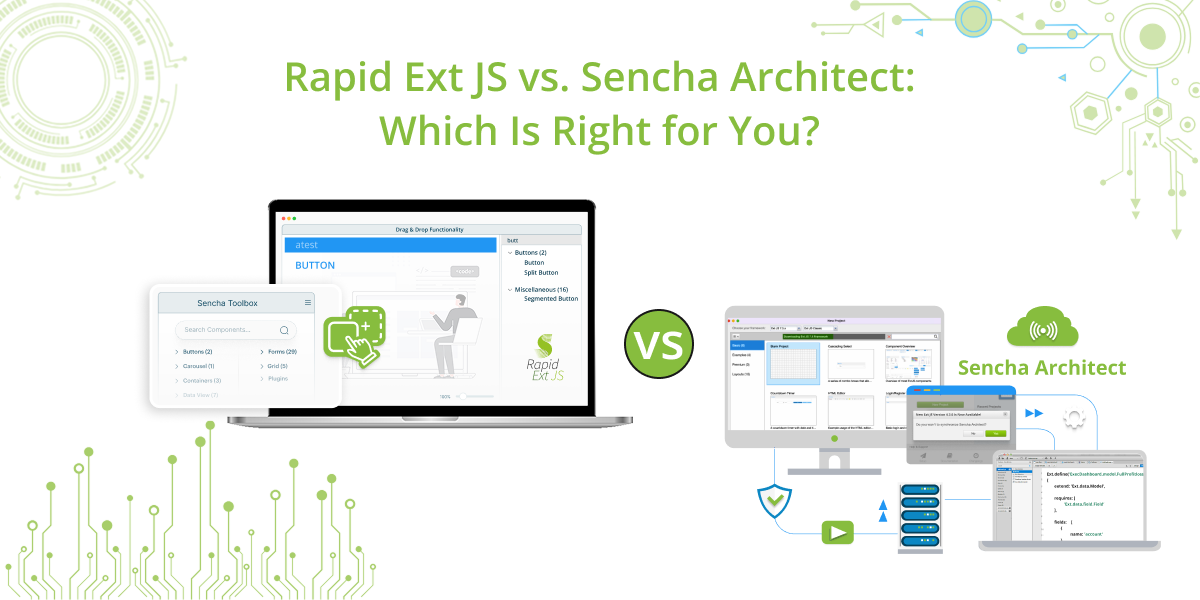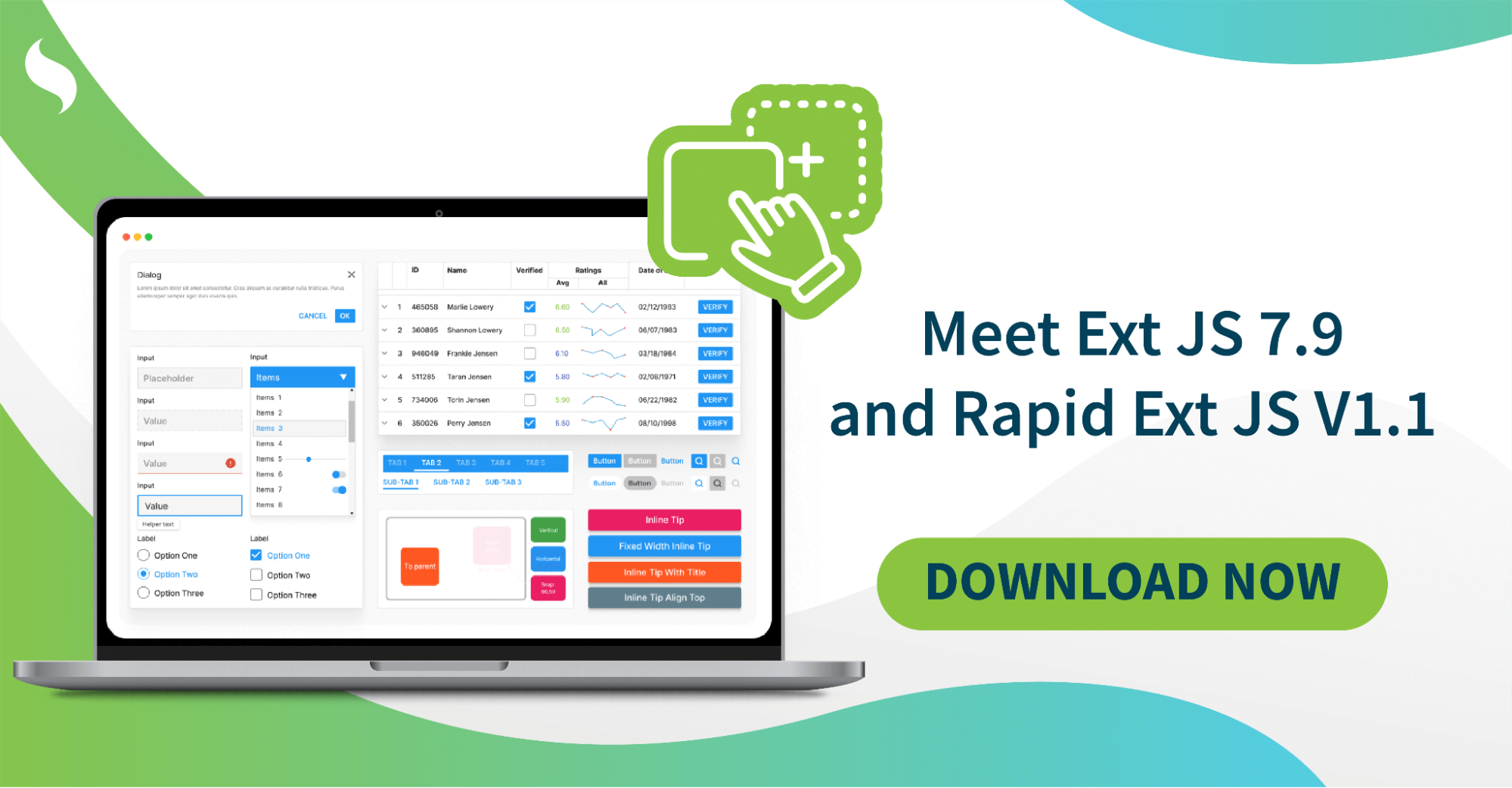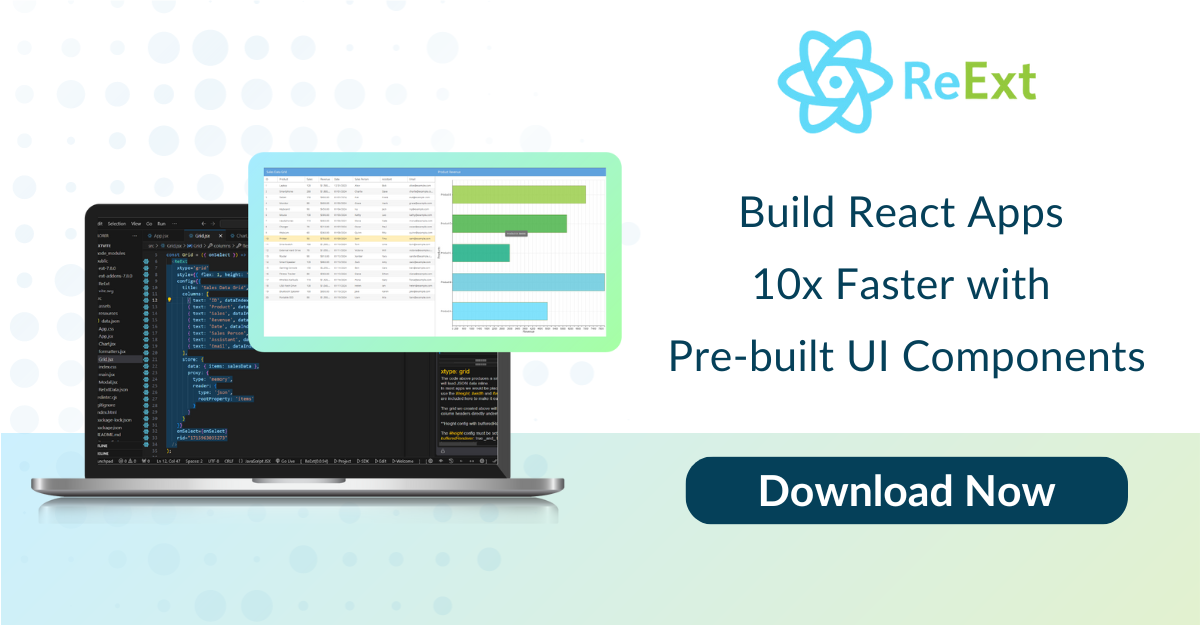10 Best React UI Component Libraries in 2025
React continues to be the most popular front-end framework in 2025. Developers choose UI component libraries to speed up development. These libraries help maintain design standards while providing accessible UI components to ensure usability for diverse users.
As the need for scalable applications grows, these libraries become essential. They offer ready-to-use, styled-components, including complex components that cater to advanced use cases. This actively reduces development time. At the same time, they ensure high performance and accessibility.

Selecting the right React UI component library is crucial. It helps in building captivating and user-friendly applications. Some developers focus on flexibility. Others prioritize customization, ease or performance. There is a library for everyone, whether they need accessible components or lightweight solutions.
This article highlights the 10 most popular React UI component libraries in 2025. We will cover tools adopted by the React community. These include Material-UI, Ant Design, and TailwindCSS. A newer tool, ReExt, is also featured, known for its intuitive API that simplifies development.
We will explore each library. The focus will be on features, strengths, and use cases. Finally, we will share insights on selecting the right UI library, considering factors like scalability and flexibility. We will also discuss the rising popularity of ReExt, which supports seamless integration with modern applications.
Let’s get started.
Why Are Developers Going All-In on the React UI Component Library?
React UI component libraries are widely used. Every developer knows their growing prevalence. There is a good reason for this.
These libraries save time and effort. They ensure uniformity in design. Building beautiful interfaces becomes easier. Instead of coding each button or card, developers select and tweak components.
Well-known libraries like Material-UI and Ant Design offer stunning, mobile-friendly components. They can help you accelerate development without sacrificing quality. They are also designed for accessibility and responsiveness.
Speed is another advantage. Many libraries prevent unnecessary re-renders. This is how you can ensure optimal application performance. They also integrate well with Next.js and Tailwind CSS. This makes them ideal for advanced projects.
In modern business, time is valuable. Companies seek polished applications quickly. You may want to focus on solving problems, not UI tasks. React UI component libraries make development faster and easier. This is why they remain a top choice.
Best React Component Library for 2025
Here are the best React component libraries in 2025:
1. ReExt
ReExt is becoming popular, especially for enterprise web applications. It is built for speed, scalability, and clean design. It supports TypeScript and integrates seamlessly with state management, making it a great choice for React UI development.
ReExt works well with Redux and React Query. It can help you simplify data handling. It also offers server-side rendering and lazy loading. These new features improve performance.
Theming options allow for easy customization, ensuring consistency in component styles. Businesses need high-performance apps. In 2025, ReExt is a strong contender due to its high-quality React components.

2. Chakra UI
Chakra UI focuses on simplicity. It offers unique React UI features without requiring CSS switches. Customization is easy with built-in style props.
It is lightweight and responsive. Dark mode support is available by default. This ensures a great look on any device and enhances user interfaces.
Chakra UI emphasizes exceptional accessibility support. You can also integrate it well with Next.js. Whether for solo developers or large teams, it eliminates hassle. At the same time, it maintains flexibility, making web applications more accessible.

3. Material-UI (MUI)
MUI remains a strong player in the React UI ecosystem. If you like Google’s Material Design, you will love MUI. It offers many customizable components. All the components are ready-made, saving you time on UI elements.
MUI is highly performant. Your app will run smoothly without bloating the bundle size. It is user-friendly and accessible to different audiences, making it ideal for user interfaces in modern apps.
MUI receives regular updates and has a strong community. This keeps it ahead of many other tools by introducing new features. In 2025, it will still be a top choice. It is perfect for dashboards, mobile apps, and complex admin panels, ensuring streamlined web applications.

4. Ant Design
For large modern web applications, Ant Design is an excellent choice. It is a professional platform with useful and powerful key features that streamline the development process. These features make work easier.
It is ideal for toolsets like dashboards and admin panels, serving as essential building blocks for complex projects. Everything stays organized. The grid system and form-handling tools are easy to edit. They can be customized to fit a custom theme, offering extensive customization options.
Need support for multiple languages? Ant Design has integrated internationalization features. Its strong community and regular updates make it a reliable option. In 2025, it remains a great choice for React applications.

5. React Bootstrap
Want Bootstrap’s structure but dislike how it works with React? React applications using Bootstrap will benefit from React Bootstrap. It keeps the classic Bootstrap style while integrating all React features.
This ensures a fully functional and responsive design. The grid system and UI components work smoothly. There is no unnecessary bloat, and the framework supports custom styles to align with branding needs.
It is built for extensive customization with a mobile-first approach. Bootstrap has been around for years. That means extensive documentation and a strong community. Even in 2025, React Bootstrap remains a fast and familiar option for modern web applications.

6. Semantic UI React
Hate complex class names? Semantic UI React is a perfect fit. It uses simple, clear class names, making styling and customization options easy to implement.
No need to search for CSS files. Just describe your requirements, and everything works smoothly. The library offers a great set of pre-made components, reducing the need to build components from scratch.
It may not be the lightest option. However, its ease of use and clean design make up for it. Custom themes ensure professional designs right out of the box. In 2025, developers will still find it appealing for seamless cross-platform compatibility.

7. Blueprint.js
Blueprint.js is built for data-heavy web applications. It excels in dashboards, analytics tools, and enterprise software, offering specialized key features such as data visualization components.
Theming is flexible. Dark mode support is built-in. This makes it a great choice for complex applications where customization options are crucial.
It is not suited for basic websites. However, it shines in complex projects. As data visualization tools gain popularity, Blueprint.js will remain a key feature in 2025.

8. React-strap
React-strap is another Bootstrap-based tool. React Bootstrap has more packages, but React-strap is still solid. It integrates React with UI tools for easy customization while maintaining a structured design system.
It handles forms, modals, and responsive design effortlessly, ensuring inclusive applications with built-in keyboard navigation. It keeps the bundle small and supports dark mode for a modern look.
It is great for enterprise applications that require both structure and flexibility. As Bootstrap continues to grow, React-strap will stay relevant for developers in 2025.

9. Tailwind CSS
Tailwind CSS is not a typical component library. It changes how styles are applied in React apps. Instead of ready-made components, you use CSS classes, giving full control over styling.
This approach maintains a clean architecture and integrates seamlessly with Radix UI and ShadCN UI, which provide headless UI solutions.
Tailwind uses precompiled styles and removes unused ones with its JIT (Just-In-Time) engine. This keeps applications lightweight while allowing smooth animations.
It integrates well with other frameworks like Next.js and supports server-side rendering for faster page loads. Modern developers love it. In 2025, Tailwind remains the best choice for flexibility, speed, and scalability.

10. PrimeReact
Professional applications demand attention to detail. PrimeReact offers a rich set of over 80 components. These range from data tables and complex charts to tree views and animations, making it ideal for data visualization.
It supports drag-and-drop functionality and includes a flexible theming system. Multiple color schemes are available, ensuring easy customization that aligns with branding needs.
PrimeReact focuses on accessibility and performance. With built-in lazy loading and responsive design, it enhances the developer experience by optimizing speed and usability. A strong community backs it, and regular updates keep it competitive.

Conclusion
The right React component UI library makes app development easier and faster. Whether you need flexibility, speed, or great design, there is an ideal option.
Material-UI and Ant Design remain industry leaders. ReExt is gaining popularity. The key is to choose a library that meets your project’s needs.
Need fast performance? Choose a lightweight library. Want a professional look? Select a well-designed option.
No matter the project, these resources help you build stunning and intuitive applications. Test them out. Find the best fit for your next project.
FAQs
What makes ReExt unique among React UI component libraries?
ReExt offers high performance and easy customization. It supports seamless TypeScript integration and enterprise-ready components.
What factors should I consider when choosing a React UI library?
Consider performance, customization options, and accessibility. Ensure compatibility with your company’s software. Community support is also essential for long-term success.
How do I get started with ReExt?
Install it using npm or yarn. Read the documentation. Start using the components in your React project.
Start building with ReExt today. Create powerful applications with ease.

When it comes to developing robust, enterprise-grade web applications, Sencha provides some of the most…

The Sencha team is excited to announce the latest Ext JS version 7.9 and Rapid…

It is important to select the best app development software with proper instructions that enhance…










